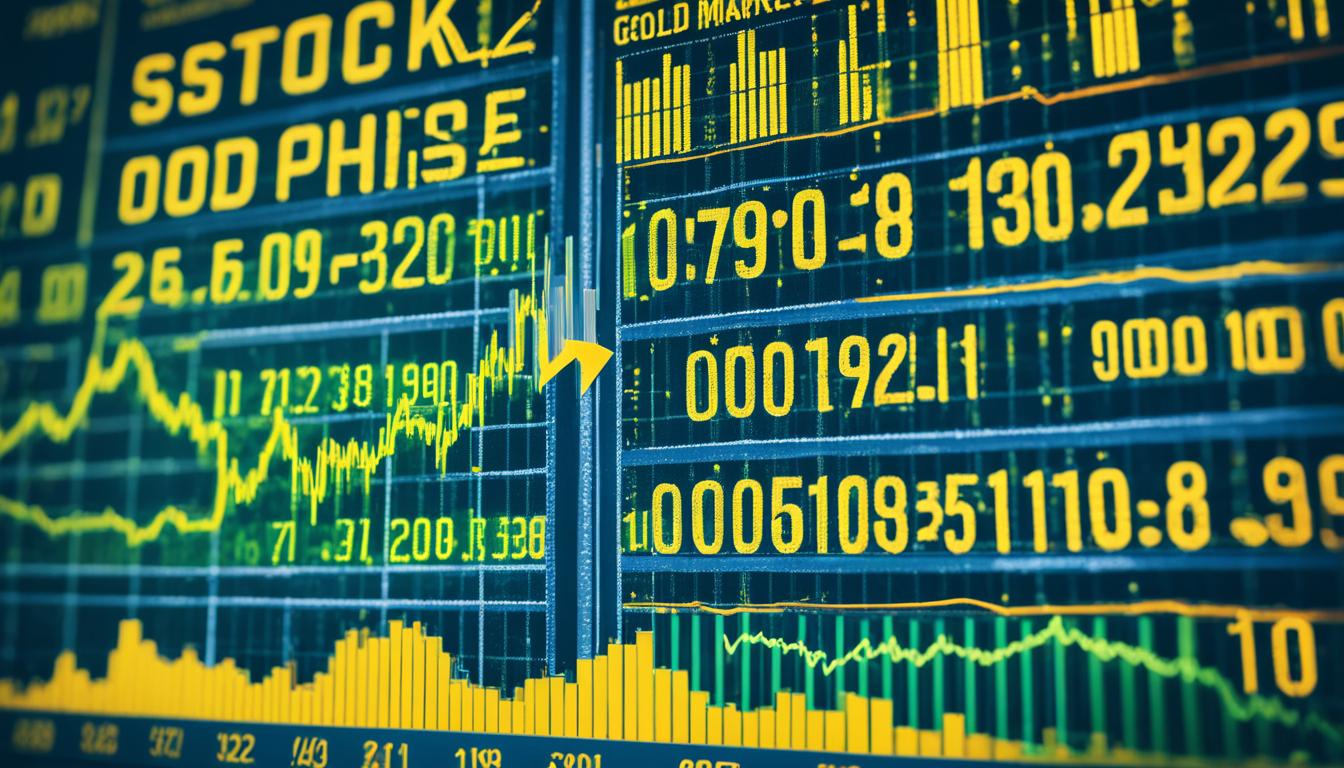Have you ever wondered how much 5 grams of gold is worth? Understanding the value of gold is crucial for investors and enthusiasts alike. The price of gold per gram fluctuates based on various factors in the global gold market.
Gold prices are determined by the London Gold Market and the COMEX futures market, which account for 85% of global gold market turnover. The Spot Price represents the current market price for immediate delivery and settlement, while the Futures Price indicates the cost for future delivery.
The London OTC Gold Market, the COMEX, the LBMA Gold Price, the LME Gold Reference Price, and the Shanghai Gold Benchmark Price influence the gold market. These benchmarks provide valuable insights into the ever-changing gold market.
Fluctuations in the price of gold are impacted by stock market speculation, geopolitical tensions, new gold mining discoveries, and central bank actions. Gold is often considered a “safe haven” asset during economic uncertainty, leading to increased demand and higher prices.
To stay informed about the current value of gold, keep an eye on the live gold prices and gold spot price charts. These tools provide real-time updates on the market, helping investors make well-informed decisions.
Whether you’re interested in gold bullion, gold ETFs, or gold futures contracts, weighing each option’s risks and benefits is essential. Buying gold bullion involves considering the spot price and the premiums of different gold products.
By understanding the factors that influence the price of gold and staying up-to-date with market trends, you’ll be better equipped to navigate the dynamic gold market and make informed investment decisions.
Factors Affecting the Price of Gold
The price of gold is influenced by various factors contributing to its market value. These factors include:
- Speculation on the stock market: Speculators who trade gold futures and options often affect the gold market, impacting its overall supply and demand dynamics.
- New gold mining discoveries: The discovery of new gold reserves can influence the price of gold as it affects the overall supply of the precious metal.
- Global events and conflicts: Geopolitical events and conflicts can create economic uncertainties, leading investors to seek gold’s safe-haven status. This increased demand can drive up the price of gold.
- Central bank actions: Central banks play a crucial role in influencing the price of gold through their monetary policies, including interest rate adjustments and gold reserve holdings.
Gold is often considered a “safe haven” asset during periods of economic uncertainties, which can lead to increased demand and higher prices. Additionally, geopolitical tensions and global events can drive up the demand for gold as investors seek to protect their wealth.
The gold market is global, and gold prices follow the trading hours of different gold exchanges worldwide. This allows investors to access and trade gold at various times throughout the day.

Gold prices constantly change due to market forces and can be influenced by local country rules and regulations that impact the gold market. Therefore, investors must stay informed about the factors affecting the price of gold and closely monitor market conditions.
Understanding the Gold Spot Price
The gold spot price is the current market value of one ounce for immediate buying or selling. It serves as a benchmark for traders and investors in the gold market, providing real-time insights into the precious metal’s value. The gold spot price constantly fluctuates due to various global economic factors, making it essential for market participants to stay informed and monitor live gold prices.
Live gold prices offer up-to-the-minute data on the current market value of gold, allowing traders to make informed decisions about buying, selling, or holding onto their gold investments. These prices reflect the dynamic nature of the gold market, responding to changes in supply and demand, economic conditions, and geopolitical events.
To understand gold price movements comprehensively, traders and investors analyze gold spot price charts. These charts depict changes in gold prices over different time periods and reveal significant trends and potential reversals. By studying these charts, market participants can identify patterns and make more accurate predictions about future price movements.
Historical gold prices are also valuable tools for analysis. They provide helpful context, allowing investors to assess gold’s performance over time and compare it to other assets. By examining historical trends, market participants can gain insights into the cyclical nature of gold prices and identify potential opportunities.
Ultimately, the gold spot price is determined by various factors, including market speculation, economic conditions, central bank actions, and geopolitical tensions. These influences create a dynamic and constantly evolving gold market, offering both risks and opportunities for traders and investors.

Note: The image above depicts a gold spot price chart illustrating the fluctuations in gold prices over time.
Investing in Gold Bullion
Investing in gold bullion has long been recognized as a popular and reliable option for individuals seeking to secure their wealth and hedge against financial risks. Gold, often called the “golden asset,” holds intrinsic value and has maintained its worth throughout history.
Individuals have several options when investing in gold. One of the most common ways to invest in gold is through gold bullion. Gold bullion refers to bars or coins typically made from pure gold and considered tangible assets.

Gold bullion offers investors the advantage of owning physical gold, which can provide a sense of security and reassurance whether gold bars or coins, this form of investment allows individuals to own a tangible asset with a recognized and universally accepted value.
However, gold exchange-traded funds (ETFs) and gold futures contracts offer viable alternatives for those who prefer a more convenient and flexible investment approach. Gold ETFs are investment funds that trade on stock exchanges and track the price of gold. They enable investors to gain exposure to the gold market without owning gold.
On the other hand, gold futures contracts are financial instruments that allow investors to speculate on the future price of gold. By entering into a contract to buy or sell gold at a predetermined price and date, investors can potentially profit from price fluctuations in the gold market.
Investors must understand the risks and benefits of gold investment options. While gold bullion provides the advantage of physical ownership, gold ETFs and gold futures contracts offer liquidity and the potential for increased returns.
In conclusion, investing in gold bullion, whether in bars or coins, remains a popular choice for individuals looking to diversify their investment portfolios and protect their wealth. Additionally, gold ETFs and futures contracts provide alternative investment avenues for those seeking exposure to the gold market without needing physical ownership. By carefully considering their investment goals and risk tolerance, investors can make informed decisions and potentially benefit from the long-term value of gold.
Buying Gold Bullion and Pricing Variations
When considering an investment in gold bullion, it is crucial to understand the spot price of gold and the premiums associated with different gold products. Gold bullion products are typically sold at a premium over the spot price, which accounts for manufacturing costs and allows distributors to make a profit.
The premium for gold bullion can vary depending on factors such as the rarity and condition of the gold coin or bar. Rare and well-preserved pieces may command higher premiums due to their desirability among collectors. Investors need to consider these pricing variations when making a purchase decision.
The spot price of gold constantly fluctuates due to various economic, geopolitical, and market factors. It is influenced by global events, central bank actions, and investor sentiment, among other variables. Investors may take advantage of periods of price dips to buy gold at a lower cost.
Additionally, some investors opt for a dollar-cost averaging strategy, which involves regularly purchasing gold over time to average the investment price. This approach can help mitigate the impact of short-term price fluctuations and reduce the risk of making a significant investment at the peak of a price cycle.
Understanding the dynamics of buying gold bullion and the pricing variations in the gold market is essential for making informed investment decisions. By staying informed about the spot price, premiums, and gold price fluctuations, investors can optimise their purchases and navigate the market more effectively.
Conclusion
Gold investments hold significant value for investors, as various economic, geopolitical, and market factors influence their price. To make informed investment decisions, it is crucial to understand the gold spot price, analyze market trends, and study historical price data. Staying informed allows investors to navigate the fluctuating gold market successfully.
Whether opting for gold bullion, gold ETFs, or gold futures contracts, it is essential to consider the risks and benefits associated with each investment option. Gold bullion, in the form of bars and coins, offers tangible assets with intrinsic value. On the other hand, gold ETFs and futures contracts provide alternative ways to profit from gold price fluctuations without physical ownership.
Successful gold investment requires staying updated with current market value and conducting thorough gold market analysis. By closely monitoring market trends and keeping track of the gold price, investors can make strategic investment decisions that align with their financial goals and risk tolerance. With its enduring allure and potential as a store of value, gold remains a sought-after investment option in today’s ever-changing economic landscape.
FAQ
How much is 5 grams of gold worth?
The value of 5 grams of gold depends on the current gold price per gram. To calculate the worth, multiply the current gold price per gram by 5. Remember that the gold price is constantly changing due to market fluctuations.
What is the current gold price per gram?
The global gold market determines the current gold price per gram, which can fluctuate throughout the day. It is influenced by various factors such as economic conditions, geopolitical tensions, and market speculation. You can consult reputable financial websites or contact a trusted gold dealer to get the most accurate and up-to-date gold price per gram.
What factors affect the price of gold?
The price of gold is influenced by factors such as stock market speculation, new gold mining discoveries, global events and conflicts, and central bank actions. Geopolitical tensions also play a role in driving up the demand for gold. Additionally, local country rules and regulations can impact the gold market and contribute to price fluctuations.
What is the gold spot price, and how does it fluctuate?
The gold spot price refers to the current market value of one ounce for immediate buying or selling. It constantly fluctuates in real time due to various global economic factors. Changes in economic conditions, central bank actions, geopolitical tensions, and market speculation all contribute to the fluctuations in the gold spot price.
How can I invest in gold bullion?
Gold bullion is a popular investment option in the bullion sector. You can invest in gold bullion by purchasing gold bullion bars or coins. These tangible assets have intrinsic value and can hedge against risk. Additionally, you can invest in gold through gold ETFs (Exchange-Traded Funds) and futures contracts, allowing you to profit from gold price movements without physically owning the gold bullion.
What should I consider when buying gold bullion?
When buying gold bullion, it is essential to consider the spot price of gold and the premiums associated with different gold products. Gold bullion is generally sold at a premium over the spot price to cover manufacturing costs and provide a profit margin for distributors. The premium can vary depending on factors such as the rarity and condition of the gold coin or bar. Understanding the pricing variations in the gold market is crucial for making informed purchase decisions.




